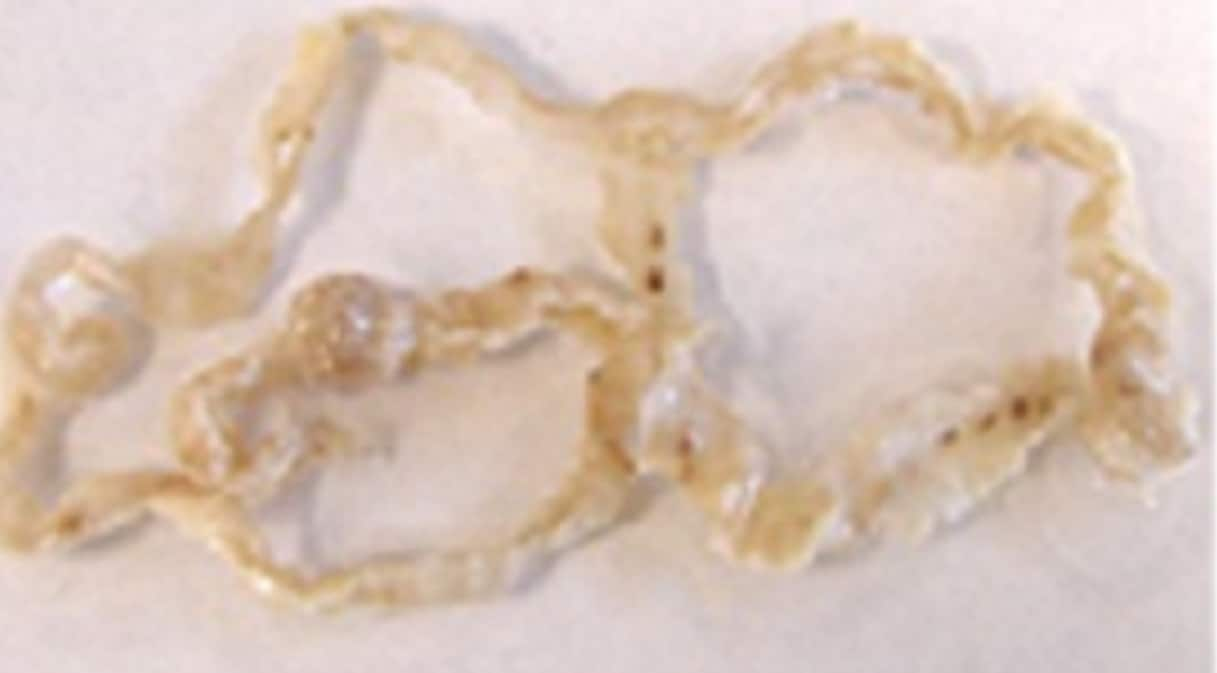Key points
- Diphyllobothriids are the largest parasitic tapeworms that can infect people.
- You can get infected by eating raw or undercooked fish.
- You can treat Diphyllobothriid infection with medication.

Overview
Dibothriocephalus latus, and related species (belonging to the family Diphyllobothriidae, also called fish or broad tapeworms), are the largest tapeworms to infect people. They can grow to up to 30 feet long. Most people infected with fish tapeworms have no symptoms. However, complications can include intestinal obstruction (blockages in the intestines) and gall bladder disease. This happens when the segments of the tapeworm (called proglottids) move or migrate in the body. Several different Diphyllobothriid species infect humans.
Resource
Signs and symptoms
Most people with fish tapeworm infection have no symptoms. If you do have symptoms, they can include
- Abdominal discomfort
- Diarrhea
- Vomiting
- Weight loss
- Vitamin B12 deficiency leading to anemia
Complications include intestinal obstruction and gall bladder disease caused by migration of proglottids (segments of the tapeworm). If you think you have a fish tapeworm infection, see your healthcare provider.
Causes
You can get Diphyllobothriid tapeworm infection by eating raw or undercooked fish from many parts of the world. One type of fish tapeworm infects freshwater fish such as trout, perch, or pike. It is found in the Northern Hemisphere (Europe, independent states of the Former Soviet Union, North America, Asia), and rarely in the southern hemisphere countries. Other species of fish tapeworm infect fish which live in both fresh and salt water, such as salmon. Fish infected with tapeworm larvae may be sent to and eaten in any area of the world.
Prevention
The easiest way to prevent Diphyllobothriid infection is to not eat raw or undercooked fish. Adequately freezing or cooking fish will kill the parasite. The FDA recommends the following for fish preparation or storage to kill parasites.
Cooking
- Cook fish adequately (to an internal temperature of at least 145° F [~63° C])
Freezing
- At -4°F (-20°C) or below for 7 days (total time), or
- At -31°F (-35°C) or below until solid, and storing at -31°F (-35°C) or below for 15 hours, or
- At -31°F (-35°C) or below until solid and storing at -4°F (-20°C) or below for 24 hours
Salting, smoking, or pickling fish does not kill the parasite.
